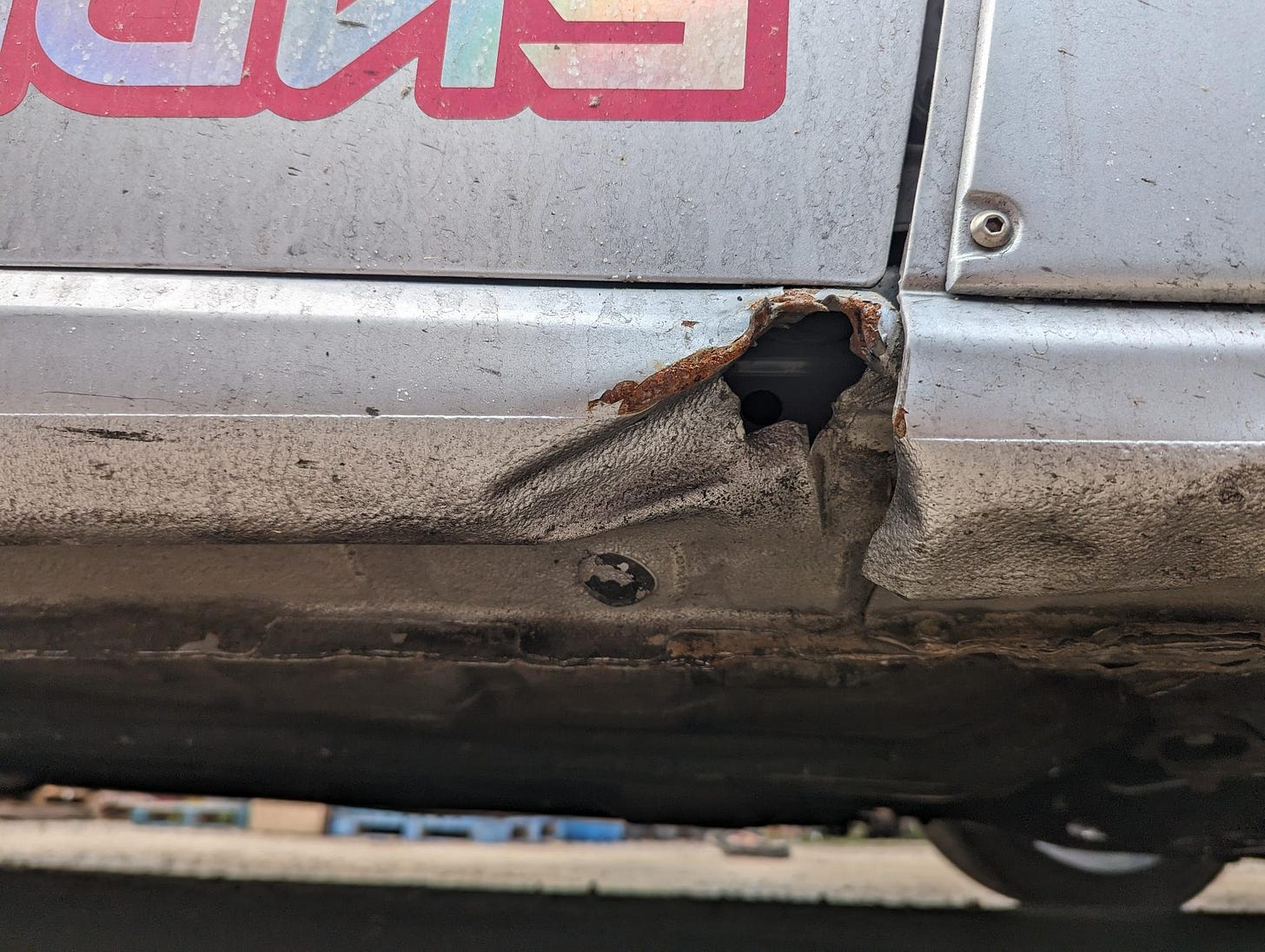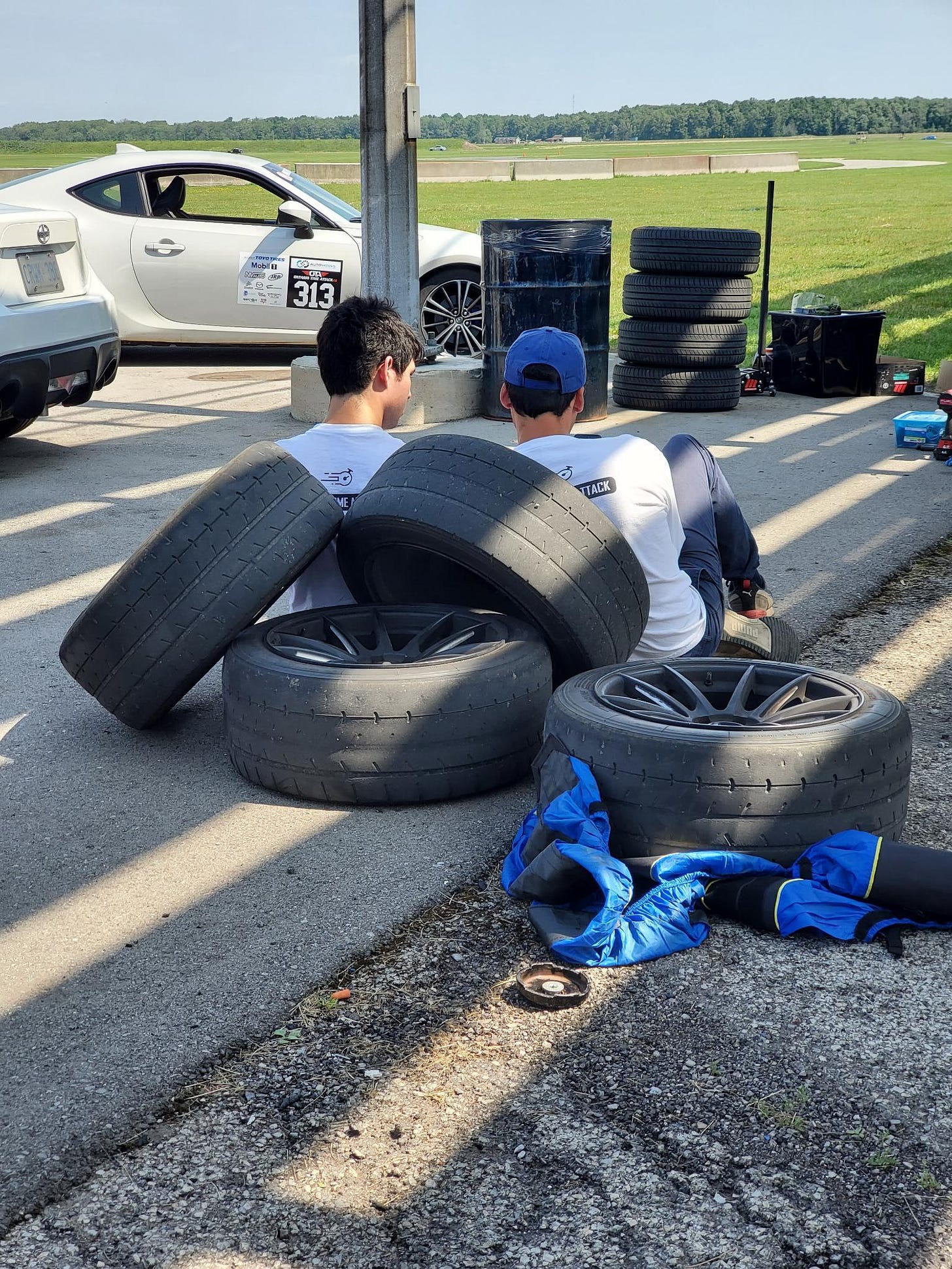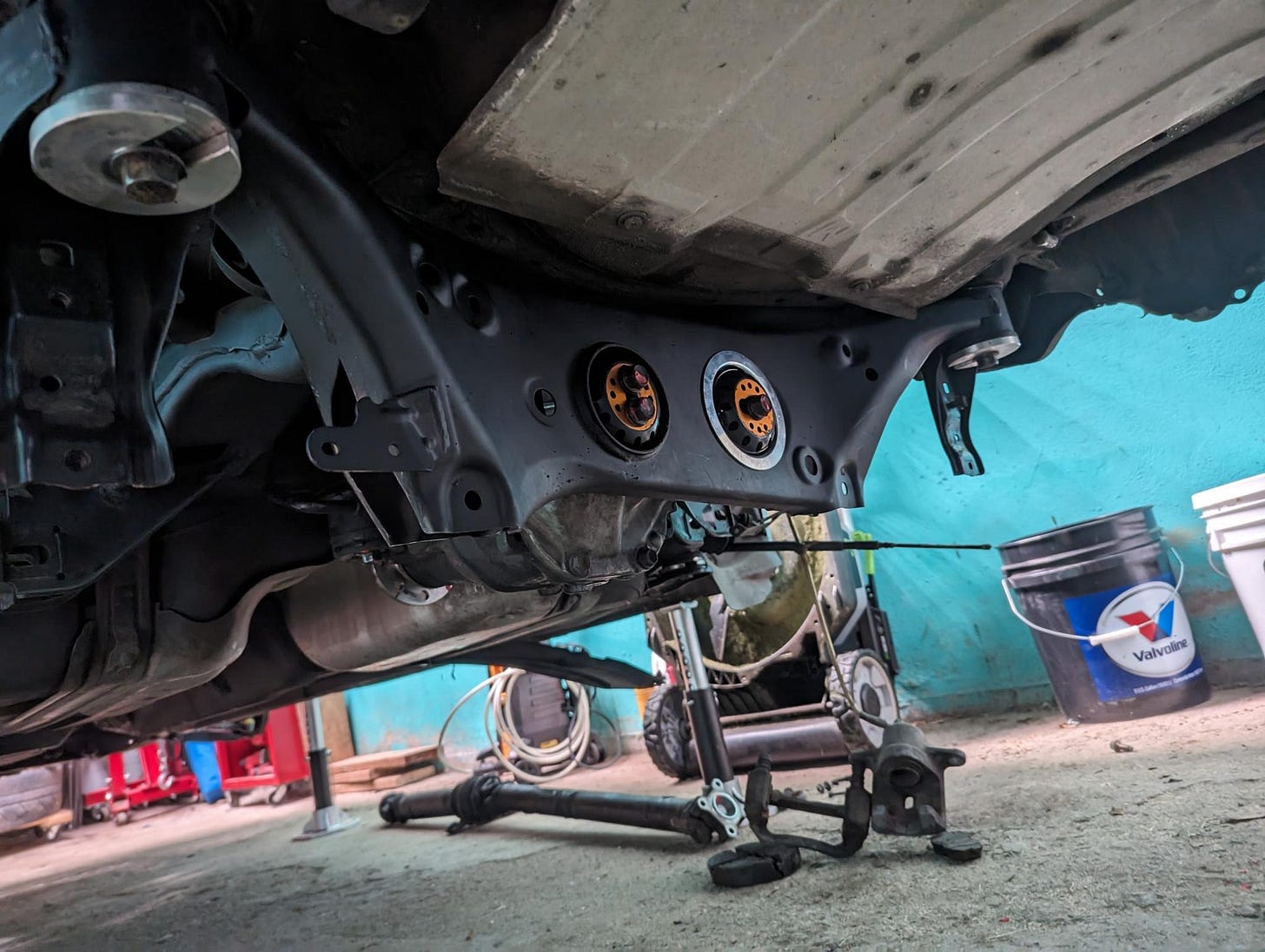Saving a drift car takes a special kind of masochist. To call the sport abusive would be the understatement of the century. This is a side of car culture where bash bars become a requirement, bumpers become disposable, and the life of tires is measured in laps rather than sessions. I knew this. I’ve been around drifting for the past decade; both grassroots and professional. I was prepared for cracked bumpers, rock chips, and blown engines. What I wasn’t prepared for was the neglect.
There’s the hole punched in the rocker panel that’s forming rust, the key marks on the passenger door, rock chips that have started to bubble, and the interior panels that have either been cut up or are vacant entirely. I feel the need to remind you that this is a street-driven car that was built in 2015. That’s not mentioning the intentional decisions; the ill-fitting widebody kit, the complete lack of airbags, and a racing harness setup that couldn’t pass tech at any time attack event worth its salt. I’m tempted to chalk this up to the apathy and nihilism that plague the drifting community, but the truth is that this says more about me than the previous owner.
Finding a twin in this condition is entirely normal - it’s the lifecycle of a twin. It was purchased new by a college kid who had the means to afford the car payment. He bought it because of the shape. He bought it because it’s a sports car and you’re supposed to buy sports cars when you’re young. Within the first seven months, he gets beat off a stoplight by his girlfriend’s ex in an Ecoboost Mustang, and then promptly trades it in for something with a turbo.
Then comes the second owner, the driving enthusiast. This is the guy who’s watched Inital D through and through, has multiple pairs of driving shoes, he heel-toes on his way to work and engages in the occasional HPDE. Immediately, it’s his dance partner, his weapon of choice. That’s until he outgrows it. The FRS is a Squier guitar, an Element skateboard, a mountain bike from Walmart, a stepping stone. The FRS gets traded in for something faster, and at best, it winds up in the hands of another driving enthusiasts. At worst, its fenders get cut up and it’s sent sideways hard enough to starve its bearings of whatever oil pressure they still enjoyed.
So really, I’m the idiot for trying to save one of these cars. I should have walked into a Toyota dealer and bought a GR86. That would have been a rational decision.
The more I looked over my newly acquired drift car, the more daunting the task in front of me appeared. Somehow its interior looked nearly as rough as its exterior; undercarriage parts were in the back seat, panels had been cut up to install a harness bar and hydraulic handbrake, and everything was covered in a thick layer of dirt. And while it might seem frivolous and counterproductive, this is where I decided to start. Because while functionally, the interior is the least important part of a car, I desperately needed to see some progress to feel like I hadn’t completely lost my mind buying this car.
The seats all came out, and I slowly started replacing any damaged panels with the hoard of leftover parts I had from the FRS. Slowly it regained functional seat belts, all four airbags, and the regular handbrake that was removed when the hydraulic handbrake was installed.
I’m not going to wax and wane mechanicals; these cars are light, have a center of gravity that rivals a Lotus, have a naturally aspirated redline of 7,500rpm, and you can fit a full set of track tires in the back. The truth is, I’ve fallen in love with these cars not for what they can do for me, but for the adventures they’ve allowed me to experience, the community I’ve discovered along the way, and the lessons I’ve learned.
The FRS/BRZ has produced what only the Mazda Miatas of yesteryear, and the Foxbody Mustangs before them were able to; a thriving HPDE community.
People regularly lap their Corvettes and Porsches, but I don’t see anybody else showing up in droves and sending their cars like they’re proper racing drivers, the way I see the owners of these cars doing. With numbers come friendships, comradery, and healthy competition. At best, it’s a recipe for a lifetime of memories. At worst; immense growth.
Growth because competition sets benchmarks, and benchmarks push you. Nothing will motivate you like knowing that you’re slower than someone else in an identical car, and the community will provide you with the coaching and mentorship you’ll need to achieve your goals.
There are a lot of pragmatic reasons for this. The cost to buy, and lap these cars is lower than anything else on the market; certainly any other modern sports car. Parts, both OE and aftermarket, are readily available, and you can talk yourself into using one as a daily driver.
Miatas used to fill this need, but NA and NB Miatas have gotten old, the NC never saw much love from the aftermarket, and the ND is still too expensive. Combine that with practical limitations; the installation of a rollbar being a barrier to entry and their day-to-day impracticality, and they just aren’t as popular as they were ten years ago.
With the interior starting to look like a complete car again, I dropped the BRZ’s rear subframe. I wanted to use my old FRS’ subframe as it came with aluminum subframe bushings, and virtually every part bolted to the rear was getting replaced anyway - the differential with a 4.88 final drive, control arms with spherical bushing, and more importantly, rear spindles with an OE parking brake. Because once I pull the drivetrain out of this car, that parking brake will be a godsend when rolling this chassis around without its drivetrain.
Despite my efforts to keep its interior OE, and fitted with airbags, it’s going to end up being a noisy, uncouth track machine. And that’s fine, the racetrack is where this car will live. It’s where these cars belong. So yes, my endeavor to rebuild a BRZ that’s gone through hell isn’t the wisest use of time, but I owe the community that I’ve formed around me over the past five years to these cars, nevermind the immense amount of driving experience it’s allowed me to have.
But the lesson here is this; for better or worse, the chassis that you choose will dictate the community you spend your time with. And if track driving experience is what you’re after, the right community will produce mentorship and benchmarks worth chasing.







